Compact umbrellas, UV umbrellas, personal umbrellas, sports umbrellas, wind resistant, automatic, kids, heavy duty umbrellas…there is an umbrella for everyone these days!
Yet, what is the history of this essential daily accessory?
The umbrella - or parasol - originated almost 4000 years ago and is a collapsible canopy supported by a wooden or metal frame that is usually mounted on a wooden, metal, or plastic pole. They were designed to protect people from the elements. Traditionally, umbrella is the term used when protecting oneself from severe elements such as storms, rain, and wind, whilst parasol is used when shielding oneself from sunlight, however the terms continue to be used interchangeably.
Often the differing factor between umbrellas and parasols is the material that the canopy is made from, as some parasols are not waterproof. Whereas umbrella canopies tend to be made of waterproof fabric or flexible plastic that will shield you from the rain. You may also find combinations of umbrella and parasol that are called en-tout-cas (French for "in any case").
Primarily, umbrellas and parasols are designed for personal use, and are hand-held and portable. Golf umbrellas are the largest of the hand-portable umbrellas. Generally, umbrellas are split into two categories: fully collapsible and non-collapsible umbrellas. Fully collapsible umbrellas feature a retractable metal pole supporting the canopy, which allows the umbrella to be folded and made small enough to fit in a handbag. This is different to the support pole of non-collapsible umbrellas, which cannot retract and only the canopy can be collapsed. Another distinction can be made between manually controlled umbrellas in which you have to push the canopy up to open, and spring-loaded automatic umbrellas, which spring open at the press of a button.
The handles of hand-held umbrellas can be made from wood or be a plastic cylinder or a bent "crook" handle (like that of a cane). There is an array of price and quality points for umbrellas that range from budget, modest quality models found at dollar stores to more pricey, high quality, designer-labelled models.
Etymology

The term parasol combines para, which means 'to shield from' and is derived from the Latin parare, and sol, meaning 'sun'. Similarly, parapluie (French) combines para and pluie, meaning 'rain' (which in turn derives from pluvia, the Latin word for rain). Therefore, a parasol is used as protection from sunlight while a parapluie protects from rain.
The term umbrella progressed from the Latin word umbra, which means 'shaded' or 'shadow'. This is recorded by the Oxford English Dictionary to have happened in the 17th century, with the first documented usage in 1610.
Some slang words for the term umbrella that have developed over the years include "gamps", which was used in Britain in reference to the character Mrs. Gamp in the Charles Dickens novel ‘Martin Chuzzlewit’ as the character was well known for carrying an umbrella, however, this usage is now obscure. Another is ‘brolley’ which is commonly used in Australia, Ireland, Kenya, New Zealand, South Africa, and the United Kingdom, and finally, ‘bumbershoot’ which was an unusual and whimsical Americanism from the late 19th century.
History
The oldest example of umbrellas existing in history appear in archaeological records discovered in the ancient Mesopotamia region in Western Asia. The sun was a far more menacing foe than the rain in those historic times, which is why the parasol was created to protect against this hazard. The early umbrella was initially created from palm leaves, papyrus and coloured feathers and was exclusively reserved for use by the upper class in ancient Egypt and the Mesopotamia region. These ancient umbrellas were often so heavy that they required multiple people to move them.
Parasols have also been discovered in records of medieval China. These were crafted out of bamboo sticks and covered with leaves and feathers. Similarly to the ancient Egyptians and Mesopotamia region, umbrellas were often linked to high-ranking individuals. In fact, on at least one occasion, twenty-four umbrellas were carried before the emperor when he went out hunting. In Classical Greece, the parasol (skiadeion), was an essential addition to a lady of fashion in the late 5th century BC. It is likely that Greece passed the use of the parasol to Rome, where it similarly appears to have been typically used by women. However, it was practice even for effeminate men to protect themselves from the heat using the Umbraculum, which was made of skin or leather, and able to be lowered at will.
The umbrella that we know today only became a reality in the 16th century. In a pivotal moment for the history of the umbrella, oil and wax canopies replaced the original covers on parasols. From this moment forward the umbrella developed into a shield against bad weather and rain, and the parasol and the umbrella would have different purposes. The umbrella became a hit in the 17th century in Western countries. This was especially so in stylish countries such as Italy, France, and Britain. Initially, the umbrella was considered a feminine accessory used to shield women from the rain, however, English men gradually embraced it throughout the 18th century with Jonas Hanway paving the way for the era of umbrellas for men.
Umbrellas grew in popularity with the upper-class Europeans in the 18th century. Umbrella makers concentrated their effort on the handles and made works of art by refining and sculpting grips from prestigious materials such as ebony. The materials used to make these handles were often expensive, so in the 19th century umbrellas became attention grabbing pieces for the wealthy. European umbrellas were often created with a whalebone structure, and although the materials used have progressed vastly, this structure remains fundamental. The whale bone frames were replaced by wood, steel, aluminium and now fiberglass. The original oil cloth canvas has also been replaced by more and more resistant types of nylon.
Modern Use
The foldable or ‘pocket’ umbrella was developed in Hungary by the Balogh brothers, whose patent appeal was admitted in 1923 by the Royal Notary Public of Szombathely. Their patent would later also be approved in Austria, Germany, Belgium, France, Poland, Great Britain and the United States.
Hans Haupt's pocket umbrellas emerged in 1928. Also, in 1928 in Vienna, a student studying sculpture at the Akademie der Bildenden Kunste Wien (Academy of Fine Arts) named Slawa Horowitz, created a prototype for an upgraded compact foldable umbrella which she patented on 19 September 1929. The small folding umbrellas were manufactured in Germnay by the company "Knirps", which eventually became a synonym in the German language for small foldable umbrellas. In 1969, Bradford E Phillips, attained a patent for his "working folding umbrella".
The story of the umbrella doesn’t end there! Materials are continually evolving to create more resistance and comfort. This has paved the way for the development of new models such as the pocket-sized umbrella, golf umbrella, transparent umbrella, walking-stick umbrella, inverted umbrella and many more. The umbrella has become both a practical object and a key fashion accessory in today’s society.
Other Uses
In religious ceremony
Roman Catholic’s use an umbrella known as the umbraculum or ombrellino, which is held over the Holy Sacrament of the Eucharist and is held by a server in short processions that take place indoors, or until the priest is met at the sanctuary entrance by the bearers of the processional canopy or baldacchino. In numerous Oriental Orthodox Churches, umbrellas are used liturgically to show respect to an individual (such as a bishop) or a holy object. In Buddhism as a sign of respect, an ornamented parasol is escorted over relics and statues of Buddha, scriptures of the Buddhist doctrine and Bhikkhus.
In photography
Photographers use umbrellas with reflective insides as a diffuser when using artificial lighting, and as glare defence and shade, usually in portrait settings. Certain photographic umbrellas are shoot-through, which means light shines through the umbrella and is diffused, instead of reflecting off the inside.
For protection against attackers
The Daily Mirror published an article in January 1902, which educated women on ways they could defend themselves from criminals with an umbrella. Often referred to as the "Umbrella Revolution" the 2014 Hong Kong protests saw protesters using umbrellas as buffers from pepper spray and tear gas used by riot police.
In arts and entertainment
To name one example of many, a technological, bullet-resistant umbrella is used extensively throughout the film Kingsman: The Secret Service (2015) as a weapon by characters Harry Hart (Colin Firth) and Eggsy Unwin (Taron Egerton).
In architecture
Frei Otto transformed the globally used personal umbrella in the 1950s into a piece of lightweight architecture. Otto established a contemporary umbrella form, founded on the minimum surface principle. The tension loaded membrane of the funnel-shaped umbrella was stretched under compression-loaded bars, and this construction type made it mechanically and structurally feasible to build very large convertible umbrellas.

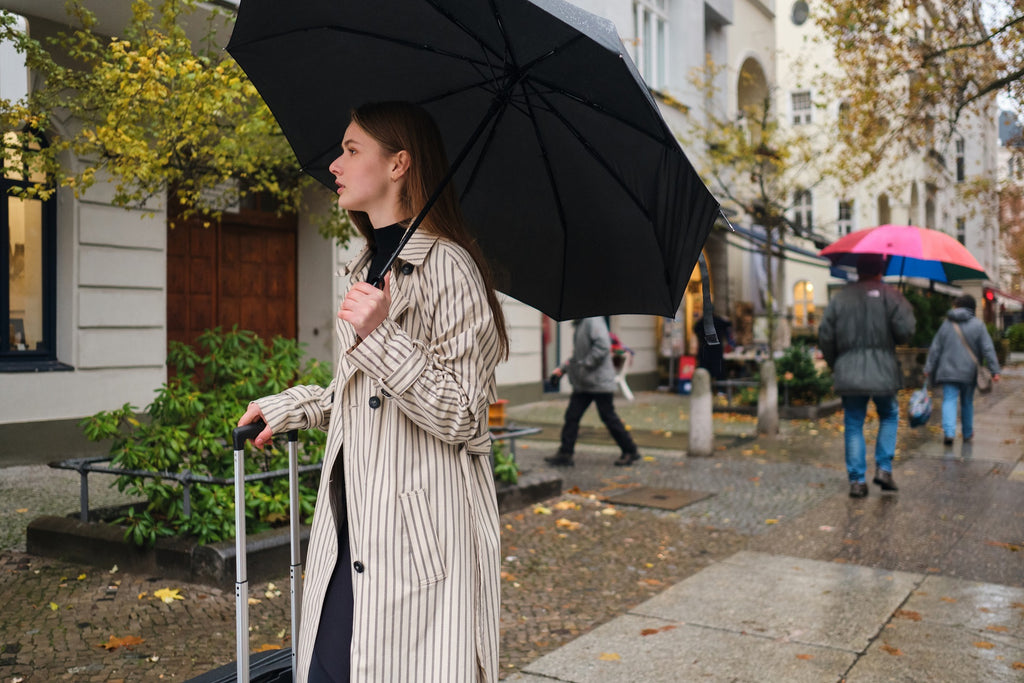

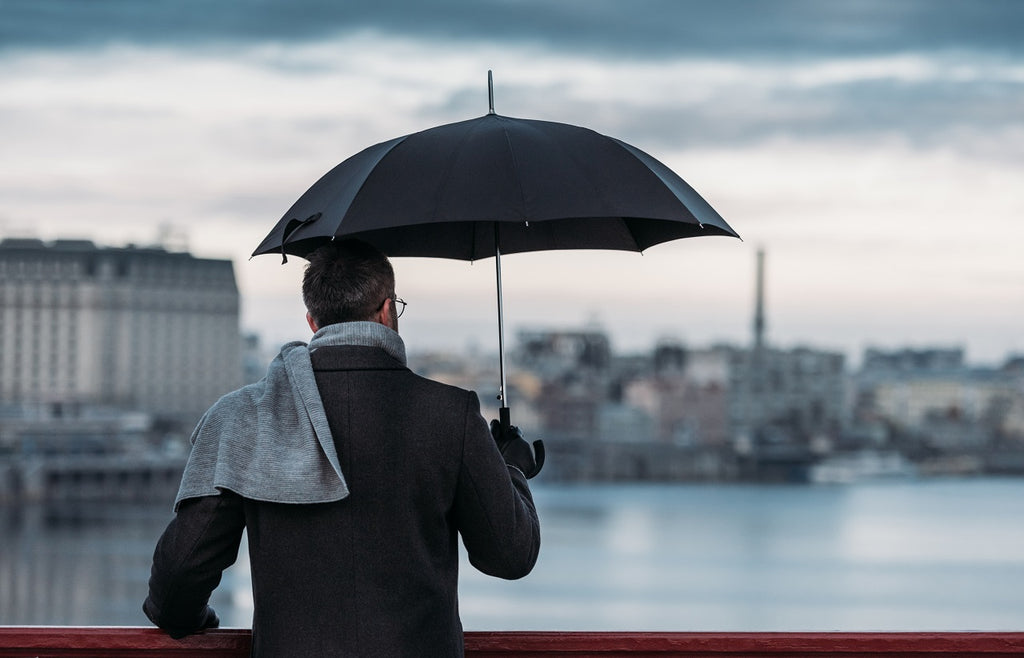
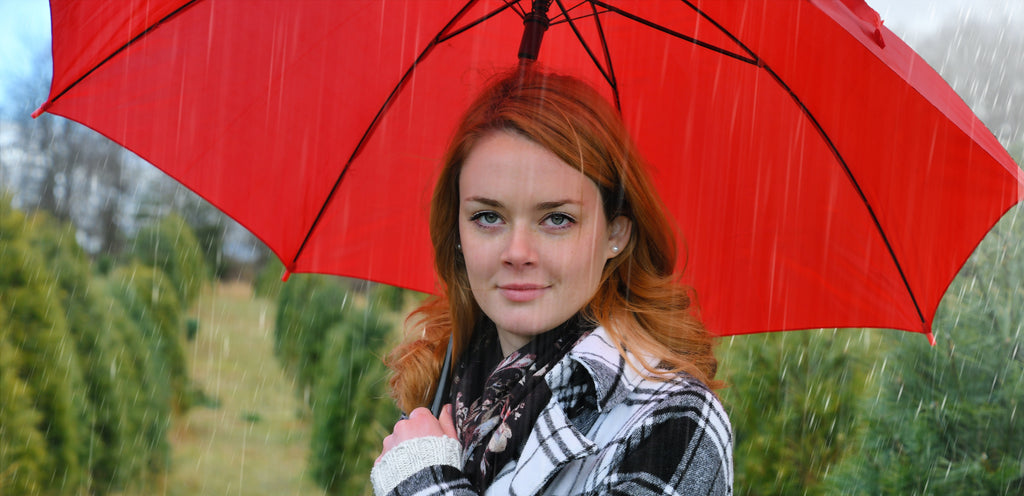
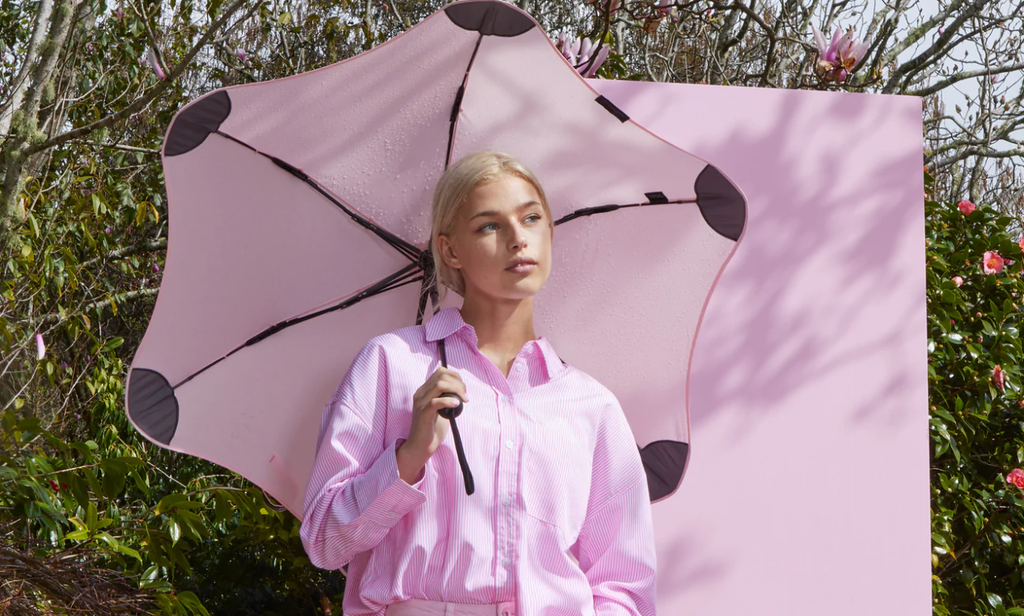


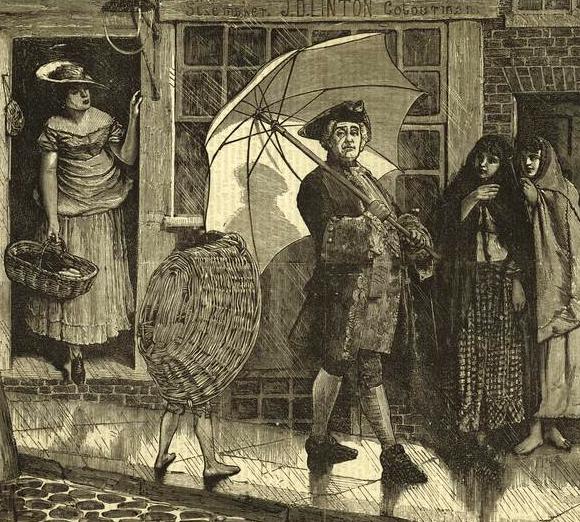
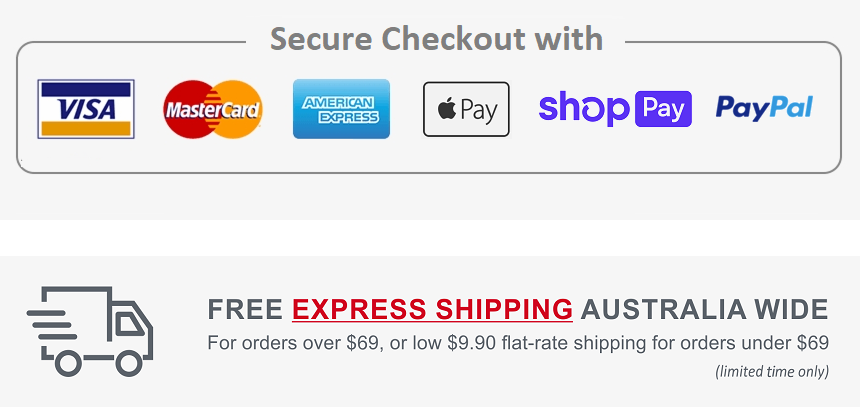
 AUD
AUD